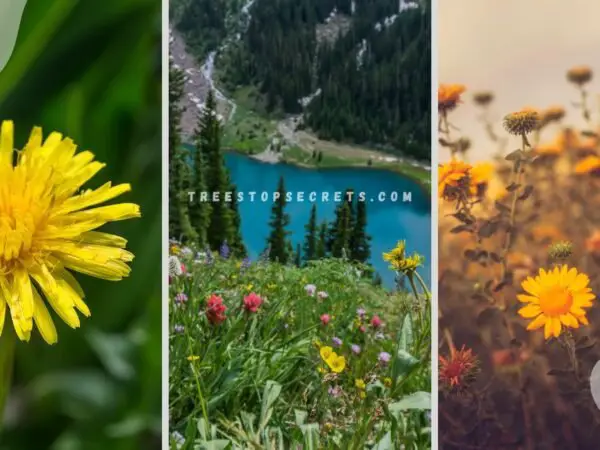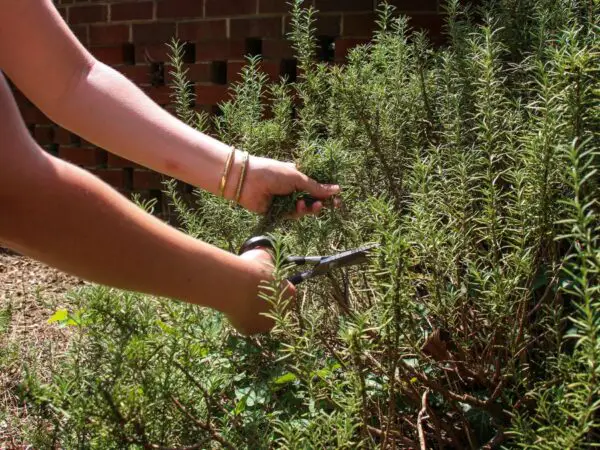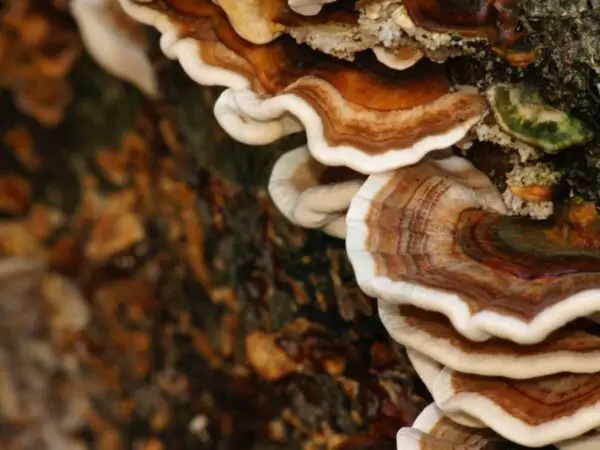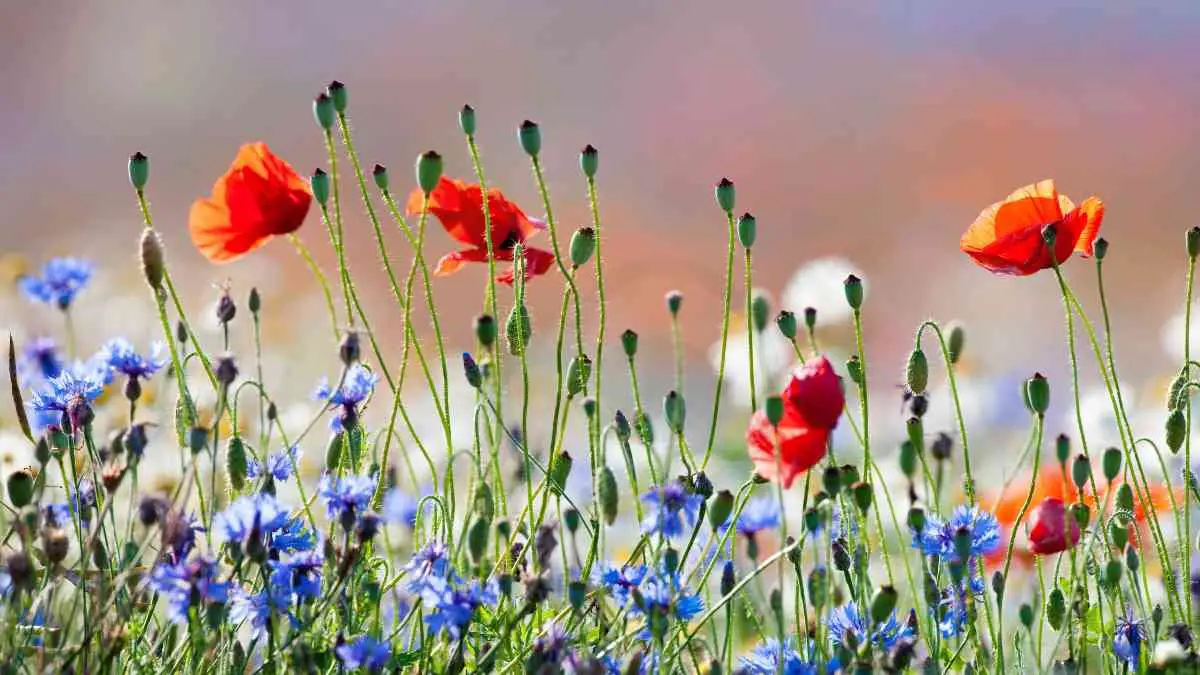
Ready to transform your outdoor space? Discover the beauty of wildflower meadows by planting colorful blooms and wildflower seeds to watch your garden burst with vibrant colors and life. Say goodbye to dull landscapes and hello to a natural oasis that attracts pollinators, adds a touch of wilderness, and bursts with colorful blooms from planting wildflower seeds. Whether you're a seasoned gardener or just starting, these wild blooms are low-maintenance and high-impact, perfect for any level of expertise.
Bring a touch of the untamed into your backyard with an array of wild flowers that bloom effortlessly, creating a picturesque contrast to traditional cultivated gardens. Embrace the charm of native flora, plant wildflower seeds, and let your garden thrive with minimal effort, sprucing it up with expert tips. Get ready to sow the seeds of change, spruce up your garden with flowers, and invite nature's beauty right to your doorstep.
Key Takeaways
- Start Small: Begin by understanding different types of wildflowers and planning your garden layout before diving into planting.
- Soil Preparation is Key: Take the time to prepare your soil adequately to provide the best environment for wildflowers to thrive.
- Plant with Care: Follow the recommended planting process for wildflowers to ensure they establish well and grow successfully.
- Consistent Care: Regularly care for your wildflowers by watering, weeding, and protecting them from pests to promote healthy growth.
- Patience is a Virtue: Growing wildflowers requires patience; stay consistent with care routines, spruce them up, and give them time to flourish.
- Diversify Your Meadow: Incorporate a variety of common North American wildflowers to create a vibrant and biodiverse meadow in your garden.
Understanding Wildflowers
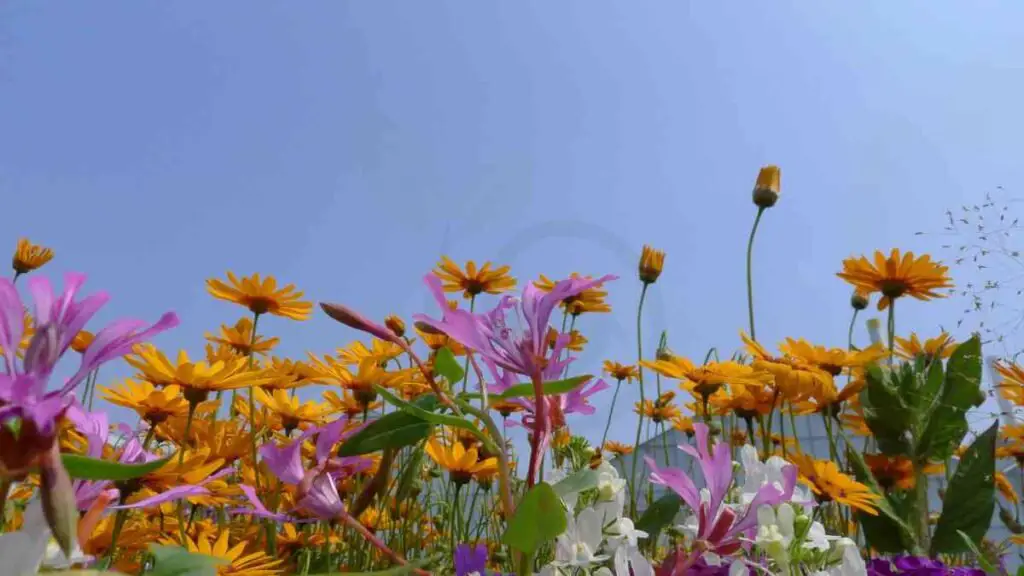
Selecting Varieties
When planting wildflowers, it's crucial to choose varieties that thrive in your specific climate. Opt for a mix of annual and perennial wildflowers to enjoy blooms throughout the seasons. Prioritize native species to promote biodiversity and support local ecosystems.
Regional Guides
Explore region-specific guides to discover the ideal wildflowers for your area. Each region, from the Northeast to the Pacific Northwest, has unique growing conditions that influence plant selection. By understanding these nuances, you can ensure successful wildflower cultivation tailored to your location.
Wildflower Meadows
Transform your garden with a stunning wildflower meadow that attracts bees, butterflies, and other beneficial pollinators. Design your meadow layout strategically to create visual appeal while providing habitat for wildlife. Opt for low-maintenance wildflowers to enjoy long-lasting beauty with minimal effort.
Planning Your Garden
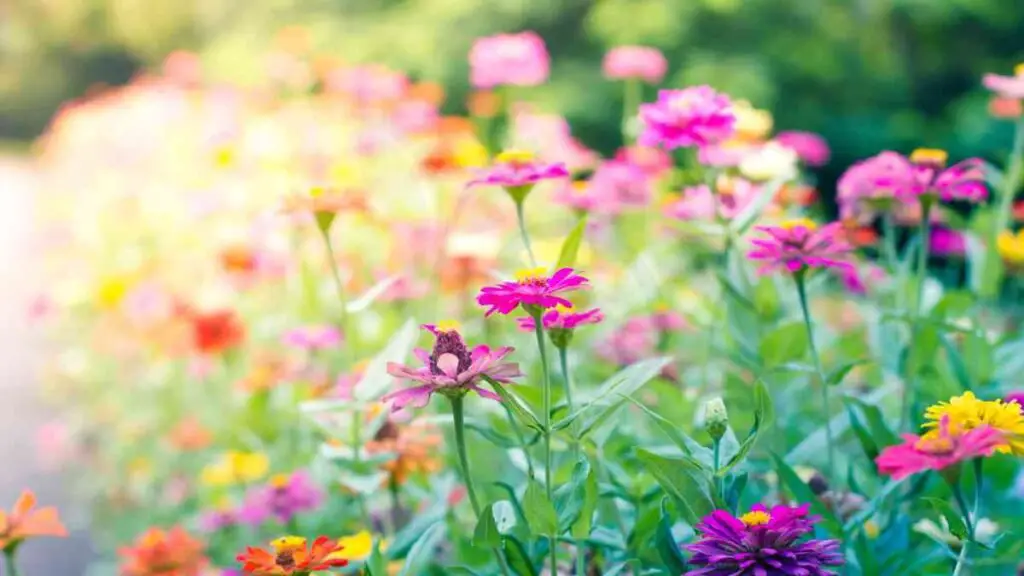
Best Planting Times
Plant wildflowers in the cooler spring or fall months for optimal growth. Understand the germination times for perennial and annual wildflowers. Ensure successful planting by choosing the right season for your wildflower seeds.
Ideal Locations
Identify sunny spots with at least 6 hours of direct sunlight for planting wildflowers. Choose areas with well-draining soil for healthy wildflower growth. Avoid locations with excessive shade or waterlogged soil for successful wildflower cultivation.
Seed Quantity
Calculate the right amount of wildflower seeds based on your planting area. Use approximately 1/4 pound of wildflower seeds for a 500-square-foot plot. Adjust seed quantity according to the size of your wildflower patch.
Preparing the Soil
Key Techniques
To ensure successful growth of wild flowers to plant, implement no-till techniques by lightly scratching the soil surface before sowing seeds. This method helps maintain soil structure and promotes seed germination. By allowing wildflowers to self-sow, you can create a sustainable garden ecosystem where plants reseed themselves naturally. When mowing your garden, leave the cuttings on the ground as mulch to protect seeds and provide nutrients for new growth. Remember to regularly water and weed your wildflower patch to support healthy development.
Sowing Methods
When sowing wild flowers to plant, broadcast the seeds evenly across the designated planting area. This method ensures that seeds are spread out for optimal growth and coverage. To facilitate even distribution during sowing, mix the seeds with sand before scattering them in the garden. For larger wildflower patches, using a seed spreader can help cover a wider area efficiently and effectively.
Planting Process
Effective Shopping
When planting wildflowers, it's crucial to start with the right seeds. Purchase high-quality wildflower seeds from reputable suppliers known for their reliability. Look for seed mixes specifically designed for your region's climate to ensure successful growth.
Before making a purchase, always check the information provided on seed packets regarding seed viability and germination rates. This will give you an idea of how likely the seeds are to sprout and develop into healthy plants once sown in the soil.
Seed Sowing
To kickstart the growth process, follow the instructions on the seed packets meticulously. These guidelines will indicate the proper sowing depth and spacing required for each type of wildflower seed. By adhering to these instructions, you increase the chances of successful germination.
After sowing the seeds, water them gently to avoid displacing them from their designated spots in the soil. Adequate moisture is essential for germination, but be careful not to wash away the seeds by watering too vigorously.
Protect your freshly sown seeds from potential threats like birds and pests by covering the area with a light mulch. This protective layer acts as a barrier, preventing external elements from disrupting the germination process.
Caring for Wildflowers
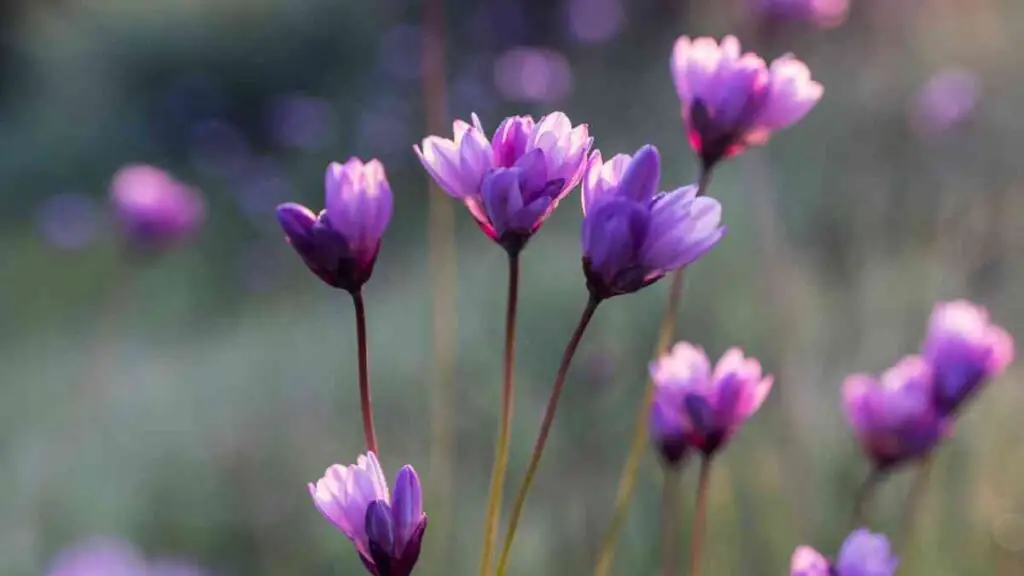
Watering Needs
Newly planted wildflowers require consistent watering to establish themselves in the soil effectively. Ensure that the soil remains moist but not waterlogged to support healthy growth. Adjust the watering schedule based on weather conditions and the moisture content of the soil.
Provide deep watering sessions for wildflowers, allowing the water to penetrate the soil and reach the roots effectively. This practice promotes deep root growth, making the plants more resilient during dry periods. Remember to water infrequently but deeply to encourage strong and healthy root systems.
Adjust your watering routine according to external factors such as rainfall and humidity levels. During hot and dry spells, increase the frequency of watering sessions to prevent wilting and dehydration. Conversely, reduce watering during rainy periods to avoid oversaturation of the soil.
Pest Protection
Regularly inspect your wildflowers for any signs of pest infestation, such as aphids or caterpillars. Early detection is key to preventing extensive damage to your plants. Implement proactive measures to keep pests at bay and protect your wildflower garden.
Introduce beneficial insects like ladybugs or lacewings that feed on common garden pests as a natural pest control method. These insects can help maintain a balance in your garden ecosystem without resorting to harmful chemicals. Encouraging natural predators is an eco-friendly approach to pest management.
Avoid using chemical pesticides on your wildflowers as they can have detrimental effects on pollinators and other beneficial wildlife in your garden. Opt for organic solutions or integrated pest management techniques that prioritize environmental sustainability and preserve the delicate balance of nature.
Growing Success
Maximizing Purpose
Plant wildflowers strategically to attract specific pollinators like butterflies or bees. Different wildflower species appeal to different pollinators, enhancing biodiversity in your garden. By selecting a variety of wildflowers, you can create a haven for various pollinators.
Create a diverse wildflower garden to support a wide range of wildlife. Various wildflowers attract different insects and birds, contributing to a balanced ecosystem. The more diverse your wildflower garden, the more resilient it becomes against pests and diseases.
Utilize wildflowers for their aesthetic appeal, ecological benefits, and wildlife support. The vibrant colors of wildflowers enhance the visual appeal of your garden. They provide food and shelter for beneficial insects and birds, promoting a healthy environment.
Care Essentials
Maintain a regular watering schedule to keep wildflowers healthy and vibrant. Watering requirements vary among different wildflower species; ensure you understand the needs of each plant. Adequate watering is crucial for establishing strong root systems and promoting blooming.
Allow wildflowers to drop their seeds for natural reseeding. This process helps perpetuate the growth cycle of wildflowers, ensuring their presence in your garden year after year. Avoid removing seed heads too early to allow for this natural propagation.
Trim back overgrown wildflowers to promote new growth and prevent overcrowding. Pruning encourages bushier growth and prolongs the blooming period of your wildflowers. It also prevents overcrowding, allowing each plant to thrive without competition.
Common North American Wildflowers
Black-Eyed Susans
Black-Eyed Susans are vibrant wildflowers known for their characteristic yellow petals and dark centers. They thrive in sunny locations with well-drained soil. Incorporate them into your garden design for a pop of color.
To grow Black-Eyed Susans, ensure they receive ample sunlight and water regularly. These flowers are low-maintenance and attract butterflies and bees. Explore different varieties such as the Goldsturm or Cherry Brandy for a diverse garden display.
Indian Blanket
Indian Blanket wildflowers, also called Firewheel, boast striking red and yellow petals, resembling traditional Native American blankets. Cultivate them in well-drained soil under full sun to enhance their vibrant colors.
These wildflowers hold cultural significance as they were used by Native Americans for medicinal purposes and ceremonies. Incorporate Indian Blankets into your garden to attract pollinators like bees and hummingbirds. Use them creatively in landscaping to add a touch of natural beauty.
Purple Coneflowers
Planting Purple Coneflowers adds a splash of colorful beauty to your garden while benefiting local wildlife. These flowers are drought-tolerant and attract butterflies, making them a valuable addition to any garden ecosystem.
Purple Coneflowers possess medicinal properties, known for boosting the immune system and treating colds. Their ecological importance lies in providing nectar for pollinators and supporting biodiversity. Care for these flowers by planting them in well-drained soil and deadheading spent blooms for continuous flowering.
Creating a Meadow
Planning Steps
Start by creating a detailed planting plan that specifies the types of wildflowers you want to grow and their locations in your garden. Consider factors like sunlight exposure and soil moisture levels.
Loosen the soil in your garden before sowing wildflower seeds to ensure good seed-to-soil contact, which is essential for germination and healthy plant growth.
When selecting wildflowers, pay attention to their heights and bloom times. This will help you create a visually appealing display with flowers blooming at different times throughout the season.
Maintenance Tips
Regularly deadhead spent flowers by removing them from the plant. This practice encourages continuous blooming and helps maintain the overall health of your wildflowers.
Keep an eye on your wildflowers for any signs of disease, such as unusual spots or wilting leaves. Promptly address these issues to prevent them from spreading to other plants in your garden.
Mulching around wildflowers is beneficial for retaining soil moisture and suppressing weed growth. Use organic mulch like wood chips or straw for better results.
Closing Thoughts
You've learned how to bring the beauty of wildflowers into your garden. By understanding, planning, preparing, planting, and caring for them, you're on your way to a flourishing wildflower haven. Embrace the diverse North American wildflowers and create a vibrant meadow that attracts pollinators and adds natural charm to your surroundings.
Now it's time to get your hands dirty and start planting those wildflowers! Take the knowledge you've gained and put it into action. Get out there, prepare your soil, sow the seeds, and watch your garden bloom with colorful wildflowers. Your efforts will not only benefit your space but also contribute to supporting local ecosystems and wildlife. Happy gardening!
Frequently Asked Questions
How do I choose the right wildflowers to plant in my garden?
To select the best wildflowers for your garden, consider factors like your location's climate, soil type, and sunlight exposure. Research native species that thrive in your area for a successful and low-maintenance garden.
How can I prepare my soil for planting wildflowers?
Before planting wildflowers, ensure your soil is well-drained and free of weeds. Loosen the soil with a garden fork or tiller, add organic matter like compost, and level the surface for optimal seed germination and growth.
When is the best time to plant wildflowers?
The ideal time to plant wildflowers is typically in early spring or fall. These seasons provide moderate temperatures and ample moisture for seeds to establish strong root systems before facing extreme weather conditions.
How often should I water my wildflowers?
Wildflowers are generally low-maintenance once established but require regular watering during their initial growth stages. Water deeply but infrequently to encourage deep root growth and avoid overwatering, which can lead to root rot.
What are the benefits of creating a meadow with wildflowers?
Creating a meadow with wildflowers enhances biodiversity, attracts pollinators like bees and butterflies, improves soil health, reduces maintenance needs compared to traditional lawns, and adds natural beauty to your landscape while supporting local ecosystems.
Image Source: Paid image from CANVA

